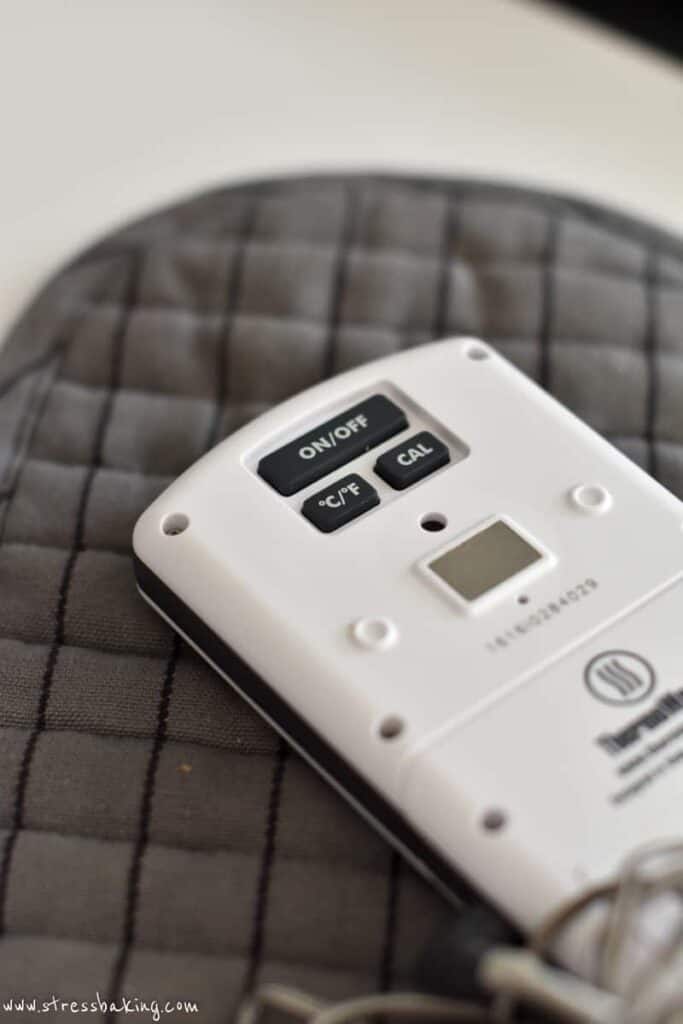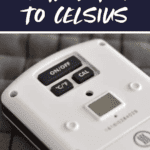How to Convert Temperatures from Fahrenheit to Celsius
Part of my Baking Basics series: Here's how to convert temperatures you see in recipes from Fahrenheit to Celsius (or vice versa) – we talk about the formula and math, as well as a quick tip using your thermometer!

Just like I couldn't possibly explain why the United States doesn't use metric measurements for ingredients, we also don't use Celsius temperature scale.
I can't tell you how many times I've been in conversation with someone, not realizing their not American, and heard them say something like, “It was so hot! I think it was 32 degrees that day” to which I stare blankly wondering why they would think snow was hot.
Ding ding ding! It's because they're talking about 32 degrees Celsius. [facepalm]
I know non-US readers must get frustrated reading my recipes in Fahrenheit, so I wanted to shed a little light on the conversion formula and provide some of the most frequently used temperatures in an easy-to-reference chart.
The formula for converting from Fahrenheit to Celsius
The temperature conversion from Fahrenheit to Celsius isn't as difficult as you might think!
(°F − 32) × 5 / 9 = °C
I know, I know – math. But here's the conversion to Celsius spelled out in steps:
- Subtract 32 from the °F temperature
- Multiply this number by 5
- Divide that number by 9
Example of the temperature conversion formula in action:
(350°F − 32) × 5 / 9 = 176°C
Conversely, if you are looking to convert from Celsius to Fahrenheit:
(°C × 9 / 5) + 32 = °F
Frequently used temperature conversions
| Fahrenheit (°F) | Celsius (°C) |
| 300°F | 149°C |
| 325°F | 163°C |
| 350°F | 177°C |
| 375°F | 191°C |
| 400°F | 204°C |
| 425°F | 218°C |
| 450°F | 232°C |
Freezing and boiling points
It's worth noting the temperatures at which water freezes and boils in both Fahrenheit and Celsius as easy reference points.
Freezing point
- Fahrenheit: 32°F
- Celsius: 0°C
Boiling point
- Fahrenheit: 212°F
- Celsius: 100°C
Converting Fahrenheit to Celsius without math
Don't want to do the math while you're in the midst of trying to cook something that requires a digital thermometer? Check the different settings on your model – it might have a button to change your readings from Fahrenheit to Celsius in an instant. Boom! No math necessary.
That button is one of the many things I adore about my Thermoworks ChefAlarm.

I hope this information helps!
Do you have any questions about this topic that I didn't answer? Let me know in the comments below!



